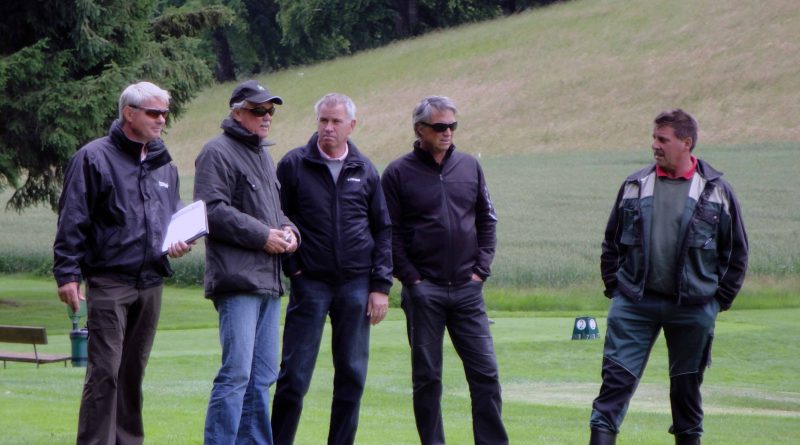Golf Course Renovation: Become a Master(planner)
A golf course renovation is a meticulous process, one that requires the consideration of various factors along with a clear, detailed masterplan to ensure a successful outcome.
A well-planned renovation can enhance the overall experience for golfers, improve the course’s playability and aesthetics, reduces maintenance and contributes to the long-term sustainability and success of the facility.
The Need for Renovations:
- Deterioration of Course Conditions: Over time, golf courses will experience wear and tear due to factors such as traffic, weather conditions, vegetation growth and/or aging infrastructure. This can lead to issues such as sub-standard turf quality, poor drainage and deteriorating amenities.
- Player Expectations: Golfers’ preferences and expectations evolve over time. They may seek courses that offer modern amenities, more challenging and enjoyable layouts, and/or more visually appealing landscapes.
- Market Competition: In a competitive golf market, courses need to stay competitive by offering a high-quality experience that attracts and retains players.
- Environmental and Sustainability Concerns: Renovations can also address environmental sustainability by improving water conservation, enhancing biodiversity, and reducing chemical usage.
- Safety: Continuous advancements in technology for golf equipment have resulted in considerable increases in distance, thus requiring an increase in safety measures/buffers to accommodate the longer wayward shots.
The Benefits of Planning for Renovations:
- Masterplan: Advanced planning helps define the goals, scope, and vision for the renovation, ensuring that all stakeholders are aligned and working towards a common objective.
- Budget & Timeframe Optimization: A well-planned renovation programme allows for accurate budgeting, cost estimation and resource allocation, phased over a period of time that minimizes the risk of financial challenges and operational disruption.
- Quality Control: Through detailed planning, specifications, and quality assurance, a renovation project can achieve high-quality results that meet or exceed expectations.
- Risk Mitigation: Identifying potential risks, challenges, and requirements during the planning phase enables proactive risk management strategies, reducing the likelihood of project delays or failures.
- Long-Term Impact: A well-planned and well-executed renovation can have a long-lasting impact on a golf course’s reputation, financial performance, maintenance efficiency and environmental sustainability, benefiting the club and the golfers for the foreseeable future.
Key Steps in Renovation Planning:
Appoint a Golf Course Architect:
The most important thing for any course project is to hire a qualified golf course architect (from the only recognized European organization, the European Institute of Golf Course Architects, www.eigca.org). The architect will work closely with the client to translate their goals and vision into actionable designs, plans, and specifications. They will provide an external assessment of the golf course, identifying strengths, weaknesses and opportunities within the golf course and potentially identifying other future issues that should be addressed. An experienced architect can also assist in the project phasing and timing, can help identify and vet qualified contractors, and also engage with any specialist consultants/suppliers (irrigation, bunker liner, environmental, etc.) as needed. The architect’s expertise in design, agronomy, engineering, and environmental sustainability is invaluable in creating a successful renovation strategy, including the following tasks:
- Existing Documents & Information:
The first step is to gather as much information as possible with regards to the golf course. Historical documents, photos, aerial images, as-built drawings, topography plans and any other documents that could be relevant to the potential project should be gathered to be used as part of the assessment, evaluation and design processes.
- Assessment and Evaluation:
Begin by conducting a comprehensive internal assessment of the current course conditions, including turf quality, drainage systems, irrigation infrastructure, bunkers, greens, tees, fairways, and on and off-course amenities. Gather feedback from maintenance staff to identify areas that require improvement or renovation.
- Project Vision & Goal Setting:
Define initial goals and objectives for the renovation project. Consider factors such as: addressing maintenance issues, enhancing playability, improving aesthetics, incorporating more sustainable practices, improving safety and adhering to new regulatory requirements. Develop a vision that guides the planning and implementation process.
- Regulations and Permits:
Understand and comply with regulatory requirements, environmental standards, zoning regulations and/or permits necessary for the renovation work. It is important to apply for and obtain approvals from local authorities, environmental agencies, as early as possible to avoid any potential delays or setbacks.
- Design Development:
Develop detailed drawings, specifications, budget pricing and a bill of quantities for the renovation work. Depending on the extent of the renovation, factors such as course layout, turfgrass selection, irrigation design, bunker renovations, green complexes, tees, cart paths, landscaping, and amenities should be considered. These documents shall form the basis for the Tender and Construction documents for the project.
- Budget & Finances:
Develop a detailed budget that accounts for design fees, estimated construction costs, materials, labor, equipment, contingency reserves, and professional services. If required, explore potential financing options such as loans, grants, sponsorships, or fundraising to help support the renovation project.
- Construction Programme & Phasing:
Create a detailed construction programme, including: procurement of materials and equipment, mobilization, project scheduling, logistics, site preparation, safety measures, existing site protection and environmental protection practices.
Determine the size and extent of the renovation, along with the budget/financing, the climate and seasons, and the disruption to the existing course for the players and operations team. If required, the project can be split into phases, executed over an extended period of time, to make the whole project more manageable financially and less disruptive operationally.
Outline a construction programme and management plan, detailing the roles, responsibilities, communication protocols, supervision and quality control measures for all parties during the construction period.
- Pre-Tender Process:
Identify and vet qualified contractors prior to commencing the tender process. Once a short list of contractors (minimum 3 or more) has been fully vetted, any final revisions to the detail design documents and construction programme will be made prior to initiating the Tender process.
Summary:
Planning for a golf course renovation is a multi-faceted process that requires thorough analysis, strategic decision-making and an effective project programme. Investing time, effort and resources into planning, with the support and experience of a qualified golf course architect, will result in transformative renovations that elevate the golfing experience, enhance a course’s stature, and provides for more efficient and effective maintenance practices.
A well-planned renovation not only addresses current challenges but also positions a golf course for future growth, sustainability and competitiveness within a dynamic golf industry.







